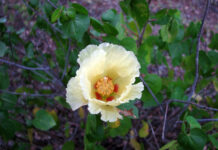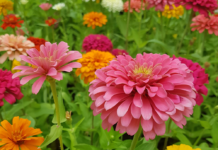It’s August, and we have not quite given up on summer and are wondering when it will end. The temperatures are consistently in the triple-digits, and we do as little as possible outdoors. The tomatoes stopped putting on blooms or did not survive once the temperatures hit the 90s at night.
But there is work to do.
By mid-August, we should begin to prepare a new vegetable garden bed for the cooler, fall-winter plantings. Begin by removing all the spent or dried-out plants. Prepare to work the bed by using a digging fork or rototilling to 12-18 inches deep. If the soil is too wet, allow it to dry before tilling.
Begin amending the soil to improve nutrients, water infiltration and water retention in the garden bed. An amendment is any substance used to the benefit of the soil and crop and is an addition to the soil. Amendments add nutrients to the plants, which we consume when eating them. Amendments include compost, animal manures and other organic material.
Spent coffee grounds and eggshells are organic materials that are inexpensive to add. Many coffee shops will save the grounds for you when you ask for them. The Environmental Protection Agency suggests adding no more than 25% volume of coffee grounds to the soil.
Grounds are also a good source of mulch material around landscape plants. But there is a risk of fungus developing as grounds pack down and have less aeration, so it is best to let the grounds dry out. And occasionally stir the coffee grounds to aerate them. Using too much coffee affects the pH (potential Hydrogen) level of the soil just as it does in our bodies. The pH level is a measure of acidity or alkalinity in number values.
Coffee is acidic and eggshells are alkaline. I bake the eggshells for about 30 minutes to allow the membranes to dry out. Then crush them to a fine consistency. Sprinkle grounds and shells throughout the garden and work them into the soil. The average eggshell is composed of 95% calcium carbonate, 0.3% phosphorus, 0.3% magnesium with traces of sodium, potassium, zinc, manganese, iron and copper.
There is a balance to establishing the best growing conditions. Plants use the most nutrients during the growing season. During preparations to plant, adding nutrients to the soil will bring the best results.
There’s work to be done. The best time to start your workday in the garden is by watching the sun rise in the east. And have plenty of water to drink while working.
Happy gardening!
Harriet Phelps is a volunteer Master Gardener for the University of Arizona.
Reference: Arizona Cooperative Extension Publication AZ1435, “Ten Steps to a Successful Vegetable Garden”
This column was first published in the August edition of InMaricopa magazine.








![Cacti in the Valley Sonoran Desert National Park [Brian Petersheim Jr.]](https://www.inmaricopa.com/wp-content/uploads/2023/12/BPJ_6963-218x150.jpg)








![Elena Trails releases home renderings An image of one of 56 elevation renderings submitted to Maricopa's planning department for the Elena Trails subdivison. The developer plans to construct 14 different floor plans, with four elevation styles per plan. [City of Maricopa]](https://www.inmaricopa.com/wp-content/uploads/2024/04/city-041724-elena-trails-rendering-100x70.jpg)